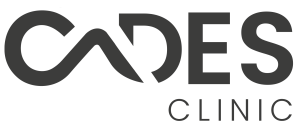Your neck plays an integral part in supporting and aligning the weight of your head with the rest of your body, and in helping you move your head.
Underuse or strain of neck muscles can result in pain and stiffness, such as poor posture, carrying heavy bags over your shoulders or sleeping in an unfavorable position.
Poor Posture
Poor posture throws the head, shoulders and back out of alignment, straining muscles and ligaments that support the neck. While not the sole source of neck pain, bad posture can contribute to chronic issues in muscles and joints in the neck region and upper back area.
Over time, chronic forward posture can result in the development of thoracic kyphosis (TK). This condition causes the spine to bend more than it should and may result in stiffness, pain, loss of mobility and an increase in loads on some parts of the spine affecting muscles, ligaments, discs and vertebrae.
Poor posture affects more than just how you look; it can also have serious repercussions for health and self-esteem, including digestive difficulties and reduced self-worth. Sitting or standing for too long in an awkward slouched position compresses organs, slowing digestion while creating discomfort in your abdomen. Furthermore, prolonged sitting or standing in an unnatural slouch position puts strain on lumbar nerves resulting in sciatica or even numbness of the lower spine causing sciatica or numbness of this region of your spine resulting in sciatica or even sciatica symptoms arising due to increased pressure lumbar nerve pressure as well.
Body’s natural alignment is designed to minimize stress on muscles and other parts of our bodies. If we ignore our mother’s advice to sit up straight or stand with our shoulders back, this sets us up for neck, shoulder, back, ribcage pains.
Poor posture may also negatively impact fascia, the connective tissue that covers and supports muscles and structures throughout the body. When it tightens too tightly, it can restrict movement or put pressure on other areas like lungs, heart or eyes – further hindering their functions and increasing risk.
Forward head and rounded shoulder posture is the most prevalent form of poor posture, which pushes the head in front of the body’s midline and can cause severe neck and shoulder pain when done regularly, such as when spending too long hunched over a computer or phone screen. Poor posture also hinders physical activities that require good posture – one study demonstrated this by showing subjects sitting for 15 minutes in short-duration bad posture experienced less fatigue during push-ups compared with subjects who sat in good posture for that period of time!
Injuries
Sprains or strains to your neck can make even simple tasks such as turning your head while driving or playing sports uncomfortable or painful, leaving you struggling with simple everyday activities such as turning. At TriHealth Orthopedics & Sports Institute and Beacon Orthopaedics & Sports Medicine, the teams can help you understand and heal from injuries such as whiplash. From muscle or ligament stretching (commonly referred to as whiplash) to fractures of the cervical spine (upper part of neck). Most commonly caused by accidents (rear-end car crashes), falls from high places or sports such as rugby, football and ice hockey; most likely caused by accidents from rear-end car crashes, accidents caused by rear-end car collisions as rear end car collisions; or through sports such as rugby, football or ice hockey.
Herniated disks are one of the leading causes of neck pain. Cervical vertebrae can shift and pinch nerves in your neck region, leading to pain or numbness in arms, hands or legs. This could also be caused by straining, spraining or other injuries such as osteoarthritis, fibromyalgia or rheumatoid arthritis affecting other parts of your body.
Injurys to the neck can be life-threatening. When such incidents arise, priorities should include protecting airway, maintaining ventilation, controlling hemorrhage and treating shock. If someone experiences neck trauma with weakness or numbness in arms or legs, immediate evaluation from a neurosurgeon is imperative.
Traumatic cervical spine injuries can result in serious medical complications, including paralysis, paraplegia or even tracheal rupture. Claw fractures (broken collarbone) should also be seen to immediately. Signs of cervical spine injuries don’t always manifest immediately, making it important to seek medical advice after any incident which might involve your neck. It is wise to be evaluated by a doctor following any accident or incident which might impact upon it. Physicians can diagnose spinal cord injuries by assessing reflexes, feeling and strength in arms and legs as well as using imaging tests such as X-rays or CT scans of the neck to detect cervical fractures, disk herniations or other problems in this region. Electromyography testing helps pinpoint nerves being compressed by bone structures or tissues within the neck area.
Growths
Growths may appear anywhere on or in the neck, from skin (lipomas) to the inner ear (cysts of salivary glands). Lymph nodes (nodules or lumps) in the neck can enlarge due to infection or cancer; similarly, thyroid gland enlargement could also occur either cancerous or benign.
Physicians at IU Health can detect and remove many growths on your head, neck, or throat. We may also refer you to specialists if necessary.
Other Health Conditions
The neck is an intricate structure, designed to protect both the spinal cord and its nerves, as well as provide access to other parts of your body. Neck pain can result from many health conditions, such as arthritis, herniated discs, spinal stenosis or muscle strain – in rare instances cancer or meningitis may even be the source of the discomfort! When experiencing neck discomfort it’s essential that you visit a physician as soon as possible in order to receive diagnosis and treatment; your physician will ask about symptoms as well as all medications (both over-the-counter/prescription/vitamins/vitamins you take) taken along with supplements/vitamins/vitamins you take.
Neck injuries are a result of sports, car accidents and falls; the most serious type of neck injury involves damage to the spinal cord resulting from either an impactful fall that fractures it, or sudden movement such as rear-end auto collision. This type of cervical dislocation or spondylolysis injury requires medical treatment and should never be neglected.
Slipped neck discs are another cause of neck pain. In between each bone of the spine lie cushion-like discs of cartilage which act as shock absorbers, providing flexibility. As soon as one bends or twists their necks, pressure is put upon these discs causing abnormal wear-and-tear which weakens their connective tissues over time – eventually even an unexpected sudden movement can injure these discs more easily and this condition is known as cervical spondylosis.
Age can also contribute to neck problems. Over time, natural wear and tear may cause parts of your spine to degenerate over time, leading to herniated disks or spinal stenosis (narrowing of spaces between vertebrae).
Swollen lymph nodes in the neck can also contribute to neck pain, particularly if they lie against neck muscles and become inflamed and spasmodic. Medication may be prescribed to alleviate neck pain, inflammation, muscle spasm and sleep disruption; however long-term use should only be undertaken under medical advice.
Disclaimer: The content on this blog is intended for general informational purposes only. It is not a substitute for professional medical advice, diagnosis, or treatment. Always consult qualified healthcare providers for personalized advice. Information regarding plastic surgery, dental treatment, hair transplant, and other medical procedures is educational and not a guarantee of results. We do not assume liability for actions taken based on blog content. Medical knowledge evolves; verify information and consult professionals. External links do not imply endorsement. By using this blog, you agree to these terms.





